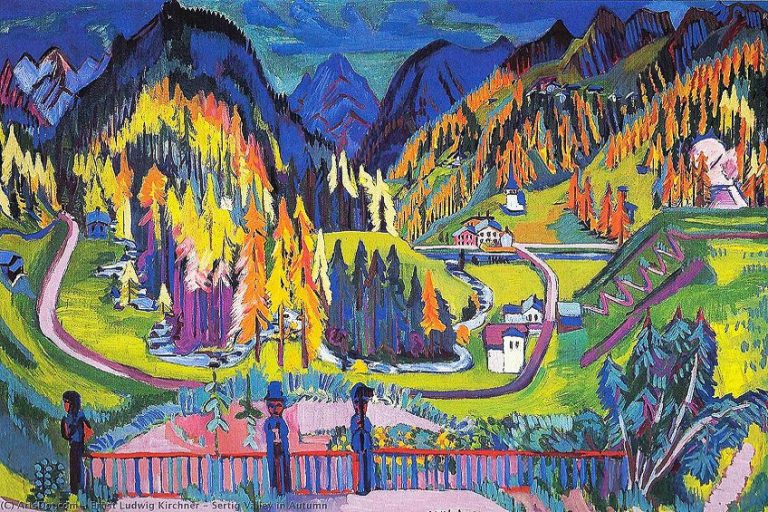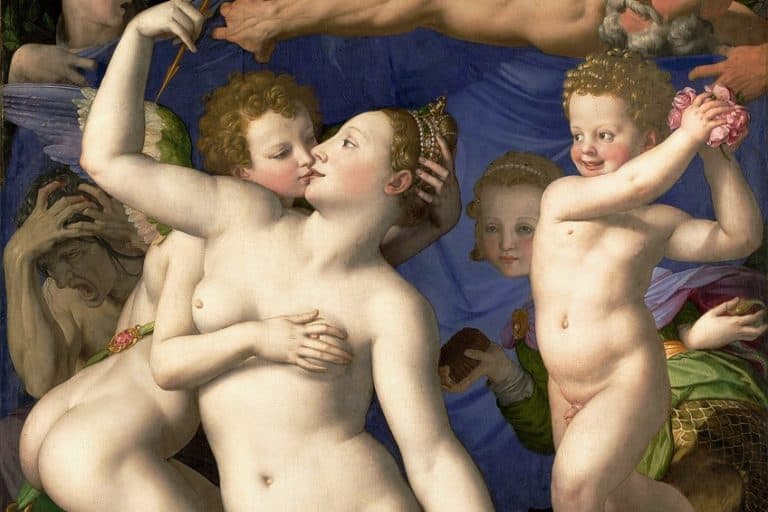Pierre Bonnard – Discover the Life of the French Painter
French artist Pierre Bonnard was a Symbolist painter, specifically working within a group called Les Nabis (The Seers). Pierre Bonnard’s paintings embodied the Nabis group’s abandonment of three-dimensional forms and embraced flat color areas instead. Unlike the other members of the Les Nabis group, however, he did not consider himself a mystic, nor did he subscribe to their Symbolist subject matter, preferring to portray the scenes of daily life that brought him so much delight. Let’s learn more about Pierre Bonnard’s biography and art style!
A Look at Pierre Bonnard’s Biography
| Artist Name | Pierre Bonnard |
| Nationality | French |
| Date of Birth | 3 October 1867 |
| Date of Death | 23 January 1947 |
| Place of Birth | Fontenay-aux-Roses, France |
Pierre Bonnard experienced the world through colors. Color was so integral to Pierre Bonnard’s paintings that if he mixed a particular hue that he found exceptionally pleasing, he would go back and add the color to his older works. He was so adamant about retouching his old works with newly discovered colors that he once got his friend and fellow artist Édouard Vuillard to keep a museum guard distracted long enough for him to add the new colors to a painting he had completed many years before.
Pierre Bonnard’s paintings captured the scene’s essence as they were not painted from observation but from the artist’s memory of the scene or individual.
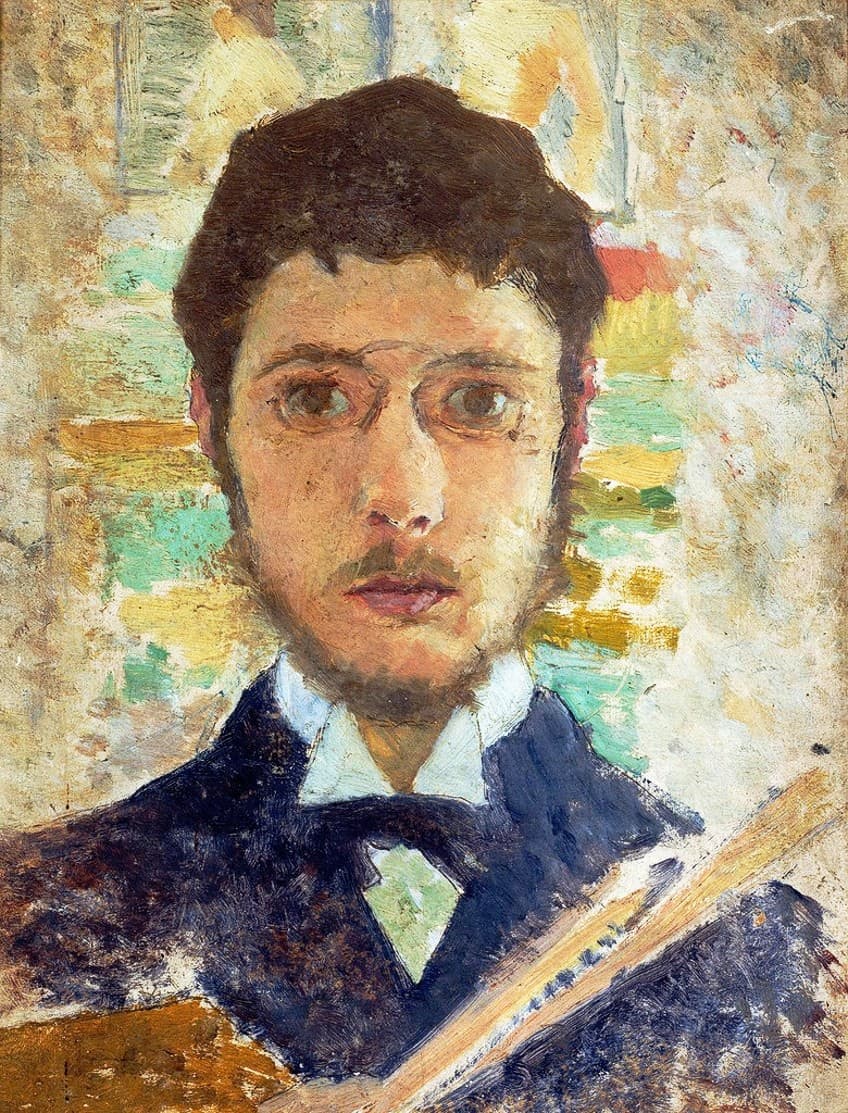
He would either sketch a subject live and take notes of the colors or take a photograph. He then used his reference notes on the coloring to produce the painting in his studio. Aside from Pierre Bonnard’s paintings, he was also known for his work designing furniture, producing painted screens, developing textile patterns, and creating stage sets.
Childhood and Education
Pierre Bonnard was the son of a senior French Ministry of Defense officer, and due to his father’s insistence, he pursued law at the Sorbonne from 1885 until 1888. He earned a Baccalaureate, specializing in the Classics, and temporarily worked as a lawyer in a government agency. However, he also pursued art at the École des Beaux-Arts, where he was unsuccessful in winning the famous prize for art students which would have allowed him to study at the French Academy in Rome, known as the Prix de Rome.
He continued to pursue his studies at the Académie Julian in 1889, where he met Félix Vallotton, Paul Sérusier, Maurice Denis, Paul Ranson, Ker-Xavier Roussel, and Édouard Vuillard.
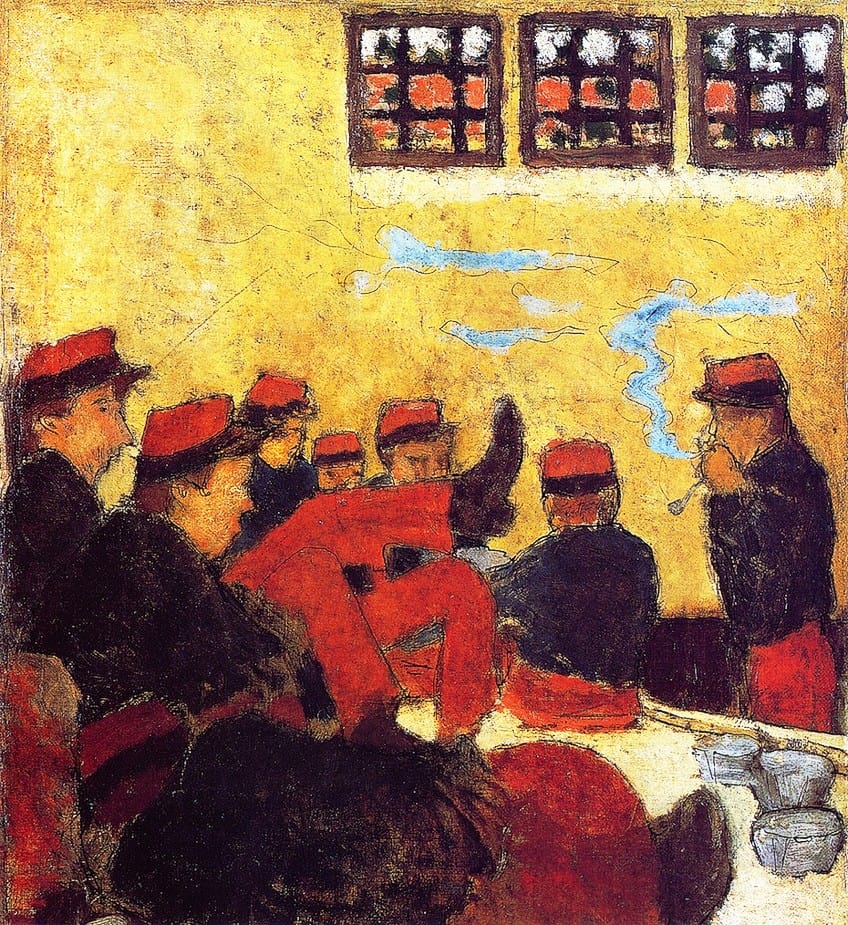
He subsequently decided to become an artist full-time and occupied a studio in Montmartre with Vuillard and Denis in 1890. Thereafter, Aurélian Lugné-Poe, a theatrical producer with whom Bonnard worked on performances at the Théâtre de l’Oeuvre in Paris joined them. Consequently, while still in his 20s, he joined Les Nabis, a community of young painters dedicated to making spiritual and symbolic artwork. Friends dubbed him an “extremely Nipponized Nabi” after the Japanese prints that inspired him.
This Japonism influence has also been attributed to the works of the Impressionists and the Post-Impressionists.
Mature Period
Pierre Bonnard met the artist Henri de Toulouse-Lautrec in 1891 and started exhibiting his works at the Société des Artistes Indépendants’ annual exhibition. That same year, he started working with La Revue Blanche, for which he and his colleague Édouard Vuillard created frontispieces. Ambroise Vollard, a renowned art dealer, printed his lithographs in 1895, the same year in which Louis Comfort Tiffany commissioned him to produce a stained-glass window. In 1896, he held his debut solo exhibition at Galerie Durand-Ruel, and in 1900, he illustrated Paul Verlaine, the poet’s collection of Symbolist poetry, Parallèlement.
At about this time, he was painting landscapes in the style of Paul Gauguin and the Impressionists in the area between Normandy and Paris. Bonnard traveled substantially around North Africa and Europe in 1907, but these trips did not appear to have had a significant impact on his artwork.
In 1910, he left Paris for the south of France. Apart from a few war-themed works, there are no indications of the war’s impact on his artwork. Historians and his personal associates regarded Pierre Bonnard as having a “quiet demeanor” and being unobtrusively autonomous. His very complicated works, which generally depict bright interiors of houses and gardens crowded with relatives and close friends, are both narrative and personal.
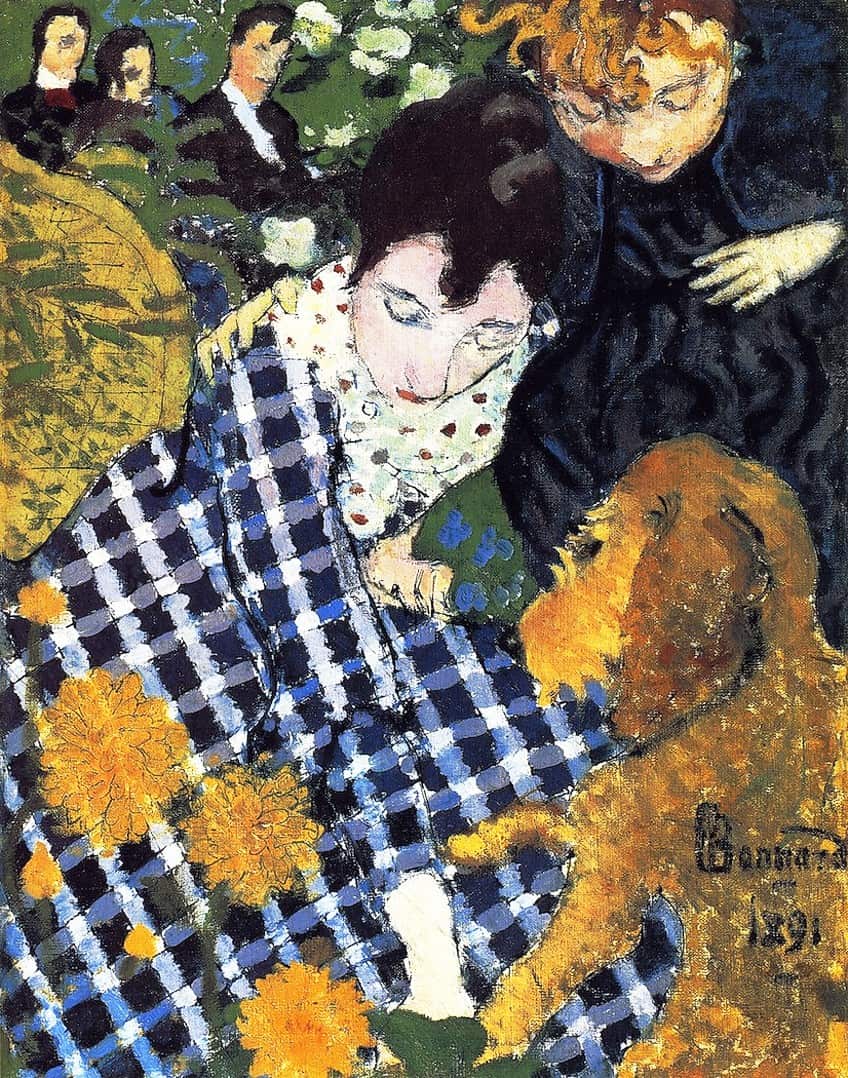
During a period spanning several decades, Bonnard’s wife Marthe de Méligny, whom the artist first met in 1893, was an ever-present subject. It wasn’t until 1925, 32 years after they first met, that he discovered her true name was Maria Boursin. She is believed to have fled her family and lied about her background and age for many years. Yet, she became the somewhat obsessive subject of his art, with him depicting her on 385 occasions. He also captured intimate photographs of her, which he later used in his artworks.
Bonnard also produced landscapes, self-portraits, street scenes, and several still lifes of flowers and fruit.
His tendency was to paint on many canvases at the same time, which he nailed to the walls of his little studio; in fact, he worked in one of the tiniest studios in contemporary art history. As a result, he was able to more freely choose the size of a painting: as he stated, “If my canvases were stretched over a frame, it would disturb me. I never know what dimensions I’ll go with ahead of time”.
Later Life and Death
Bonnard relocated to Le Cannet in the south of France in 1926. He reverted to the spectacular color and light of his earlier works in his later years. Pierre Bonnard’s paintings, along with Vuillard’s, were featured in a significant exhibit at the Art Institute of Chicago in 1938. Throughout World War II, he resided at Le Cannet somewhat like a hermit, following the passing of his wife in 1942.
Bonnard completed the large painting, “Saint Francis Healing the Sick” (1947), for the Church of Assy shortly before his death.

A week before his death, he completed his final painting, The Almond Tree in Bloom (1947), in his home. The Museum of Modern Art in New York arranged a retrospective exhibition of Pierre Bonnard’s paintings in 1948, although initially it was planned to be a celebration of the artist’s 80th birthday.
Despite his avoidance of public attention, Pierre Bonnard’s paintings sold well throughout his lifetime.
Pierre Bonnard’s Legacy
Bonnard’s fame had already been overshadowed by succeeding avant-garde innovations in the art world around the time of his passing. Christian Zervos, assessing an exhibition of Pierre Bonnard’s paintings in Paris in 1947, found the artist lacking in regards to his relationship to Impressionism: “with Bonnard’s works, Impressionism becomes vapid and slips into degeneration. I believe that Pierres Bonnard is a talented artist for our time and, certainly, for art history” Henri Matisse once remarked.
Consequently, Bonnard is generally labeled as a late Impressionist, yet this description falls short of his personal advances in painting. Bonnard’s art is defined by a distinctive use of color that enhanced and intensified the Impressionist palette.

His utilization of overlapping color planes foreshadows the Cubists’ use of planes piercing one another. Pierre Bonnard has also been recognized for his distinct humor expressed in and through art. The eccentricity of Bonnard’s compositions is entirely attributable to his wit. He thinks it’s amusing to put a figure in a corner or to have a cat peering out at the spectator. His metaphorical whims have a comedic edge, such as when he transforms a person into a wallpaper design.
That wraps up our exploration of Pierre Bonnard’s biography and art. In his paintings, Bonnard frequently depicted domestic settings featuring his friends and relatives, documenting intimate moments of ordinary life. His works exude warmth, coziness, and familiarity. Bonnard was well-known for his use of vivid and dramatic colors to express the atmosphere and mood of his subjects. He distinguished himself from the other members of the Symbolist group by emphasizing ordinary happenings rather than the more esoteric subject matter in which they were engaged.
Frequently Asked Questions
Who Was Pierre Bonnard?
Pierre Bonnard was a Post-Impressionist and Nabis movement painter and printer from France. In his works, he was renowned for his utilization of vibrant color and his ability to portray intimate moments of ordinary life. Japanese prints and the ornamental arts influenced Bonnard’s early works. He produced landscapes and still lifes, as well as intimate domestic scenes. In addition, he created a large number of lithographs, as well as illustrations for magazines and books.
Who Were the Nabis?
The Nabis were established by a collective of young artists who met while studying at Paris’ Académie Julian. They were motivated by Paul Gauguin’s works and the Symbolist movement, and they aspired to develop a new type of painting that was more mystical and decorative than the Impressionists’ realistic approach. The Nabis thought that art should be included in all elements of life, and they tried to produce artworks that were both beautiful and utilitarian in function. Despite the fact that they were never really a formal organization, their concepts and aesthetic ideals had a considerable influence on the development of modern art.
Isabella studied at the University of Cape Town in South Africa and graduated with a Bachelor of Arts majoring in English Literature & Language and Psychology. Throughout her undergraduate years, she took Art History as an additional subject and absolutely loved it. Building on from her art history knowledge that began in high school, art has always been a particular area of fascination for her. From learning about artworks previously unknown to her, or sharpening her existing understanding of specific works, the ability to continue learning within this interesting sphere excites her greatly.
Her focal points of interest in art history encompass profiling specific artists and art movements, as it is these areas where she is able to really dig deep into the rich narrative of the art world. Additionally, she particularly enjoys exploring the different artistic styles of the 20th century, as well as the important impact that female artists have had on the development of art history.
Learn more about Isabella Meyer and the Art in Context Team.
Cite this Article
Isabella, Meyer, “Pierre Bonnard – Discover the Life of the French Painter.” Art in Context. June 21, 2023. URL: https://artincontext.org/pierre-bonnard/
Meyer, I. (2023, 21 June). Pierre Bonnard – Discover the Life of the French Painter. Art in Context. https://artincontext.org/pierre-bonnard/
Meyer, Isabella. “Pierre Bonnard – Discover the Life of the French Painter.” Art in Context, June 21, 2023. https://artincontext.org/pierre-bonnard/.




